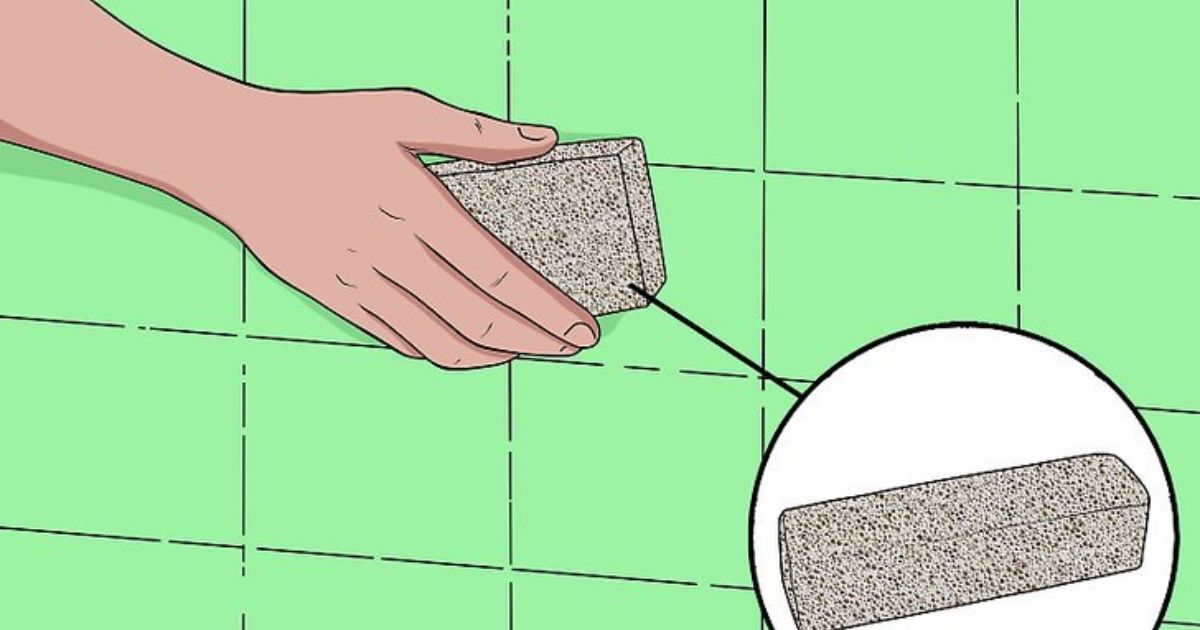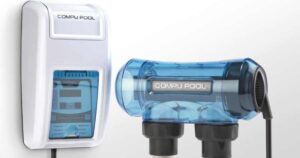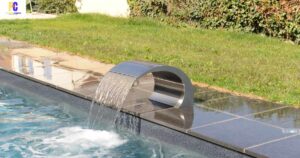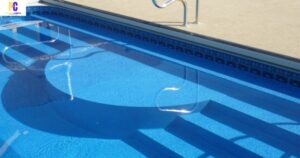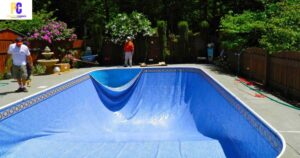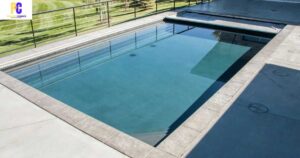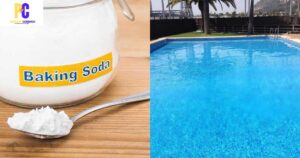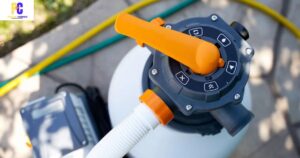To remove calcium from a vinyl pool liner, use a mild acid solution. Mix vinegar and water, scrub gently with a soft brush, then rinse thoroughly. Avoid abrasive cleaners to prevent damage. Repeat as needed for a clean and well-maintained vinyl pool liner.
Dive into crystal-clear waters! Discover the simple magic to reclaim your vinyl pool’s beauty. Uncover the secrets of removing calcium effortlessly. Take action now for a spotless, gleaming pool – your aquatic heaven awaits! How to Remove Calcium From Vinyl Pool Liner? Reclaim your pool’s sparkle with our easy guide. Act now for a pristine aquatic paradise!
Learn the easy steps to remove calcium from your vinyl pool liner. Use a gentle acid solution like vinegar, scrub, and rinse for a spotless pool surface. Avoid abrasive cleaners to protect the vinyl. Follow these simple tips for a clean and inviting pool experience!
Introduction to Calcium Buildup in Vinyl Pool Liners
Understanding the Nature of Calcium Deposits
Ah, calcium deposits. Those pesky little friends that love to cling onto our beloved vinyl pool liners. But what exactly are these calcium deposits? Well, they occur when calcium and other minerals dissolve in the pool water and then settle onto the pool surface.
The Impact of Calcium Buildup on Vinyl Pool Liners
Now, you might be wondering, why should I care about these calcium deposits? Well, besides being eyesores, they can actually cause some serious damage to your vinyl pool liner. These deposits can lead to discoloration, rough textures, and even potential tears or cracks in the liner if left unattended. So, it’s important to tackle the issue before it escalates into a full-blown pool liner nightmare.
Understanding the Impact of Calcium on Vinyl Pool Liners
Effects of Calcium Buildup on Pool Aesthetics
Picture this: you’re lounging beside your pool, enjoying a refreshing beverage, and all of a sudden, your eyes are drawn to those unsightly white spots on your pool liner. Not exactly the poolside paradise you had in mind, right? Calcium buildup can seriously impact the aesthetics of your pool, making it look neglected and less inviting.
Potential Damage Caused by Calcium Deposits
Aside from being an eyesore, calcium deposits can also wreak havoc on your vinyl pool liner. The rough texture of these deposits can make the liner more prone to tears or cracks. And let’s be honest, nobody wants to deal with a leaking pool. So, taking care of calcium buildup is not just about maintaining a pretty pool, but also protecting the structural integrity of your liner.
Preparing for Calcium Removal: Necessary Tools and Safety Measures
Gathering the Essential Tools for Calcium Removal
Before you embark on your calcium removal mission, it’s important to arm yourself with the necessary tools. These might include a pool brush or scrubber, a calcium remover solution (if you’re going the chemical route), a bucket, and a good ol’ dose of patience. These tools will help you tackle those stubborn calcium deposits head-on.
Safety Precautions before Initiating Calcium Removal
Now, let’s talk safety. Before you start scrubbing away, make sure you take some precautions to protect yourself and your pool. Consider wearing gloves and eye protection to shield yourself from any potential chemical splashes. It’s also a good idea to turn off your pool pump to avoid agitating the water during the calcium removal process. Safety first, folks!
Methods for Removing Calcium Deposits from Vinyl Pool Liners
Chemical-Based Methods for Calcium Removal
If you’re dealing with stubborn calcium deposits, you might need to bring in some reinforcements in the form of chemical-based solutions. These products are designed to dissolve and remove the calcium buildup from your pool liner. Just make sure to follow the instructions carefully and use them in moderation to avoid any unwanted side effects. Remember, a little bit of chemistry can go a long way!
Non-Chemical Methods for Calcium Removal
For those who prefer a more natural approach or want to minimize the use of chemicals, fear not! There are non-chemical methods available for calcium removal as well. These can include using a vinegar solution, a pumice stone, or even good old-fashioned elbow grease. Just be prepared to put in a bit of extra effort, and you’ll be rewarded with a calcium-free pool liner.
So, there you have it, folks! Armed with this knowledge and a touch of determination, you’ll be well-equipped to tackle those calcium deposits and restore your vinyl pool liner to its former glory. Happy cleaning and enjoy your sparkling pool!
Step-by-Step Guide to Removing Calcium from Vinyl Pool Liners
Draining and Cleaning the Pool
First things first, you’ll need to drain the pool to access the vinyl liner and tackle that pesky calcium buildup. Grab your rubber ducky and say goodbye to the water! Once your pool is empty, give the liner a good scrub using a soft brush and a mild detergent. This will help remove any dirt or debris that might interfere with the calcium removal process.
Selecting the Appropriate Calcium Removal Method
Now that your pool is squeaky clean, it’s time to choose the best method for removing the calcium. There are a few options to consider, depending on the severity of the buildup and your personal preferences. You can try using a vinegar solution, a calcium remover product specifically designed for vinyl liners, or even a pumice stone for tougher deposits. Pick the method that suits you and your pool’s needs.
Implementing the Chosen Method
Once you’ve decided on your method of choice, it’s time to get down and dirty (but not too dirty, because we just cleaned the pool!). Follow the instructions provided with your chosen calcium remover and apply it to the affected areas of the vinyl liner. Let it work its magic for the recommended amount of time, and then give it a gentle scrub to help loosen the calcium deposits. Rinse thoroughly with water to ensure all the residue is removed. Voila! Your vinyl liner is on its way to being calcium-free.
Preventing Future Calcium Buildup: Maintenance Tips and Best Practices
Regular Cleaning and Maintenance Routine
Now that you’ve successfully bid farewell to calcium, let’s make sure it doesn’t make a comeback. Implementing a regular cleaning and maintenance routine is key to preventing future buildup. Keep an eye on your pool’s water chemistry, skimming off any debris, and giving the vinyl liner a gentle scrub every couple of weeks. Remember, prevention is always better than calcium removal!
Water Chemistry Management to Control Calcium Levels
Maintaining proper water chemistry in your pool is crucial to controlling calcium levels and preventing future buildup. Test the water regularly and adjust the chemical balance if needed. By keeping the calcium hardness, pH, and alkalinity levels in check, you’ll minimize the chances of calcium deposits forming on your vinyl liner. So, grab your test kit and be the chemistry master of your pool!
Troubleshooting Common Issues during Calcium Removal
Dealing with Stubborn or Resistant Calcium Deposits
Sometimes, calcium deposits can be stubborn little rascals. If you encounter a particularly tough deposit that refuses to budge, don’t lose hope. You can try using a stronger calcium remover product, such as a diluted muriatic acid solution, but be cautious and follow the manufacturer’s instructions carefully. Additionally, using a pumice stone or a magic eraser can provide some extra scrubbing power. Just remember to be gentle to avoid damaging the vinyl liner.
Addressing Potential Damage to the Vinyl Pool Liner
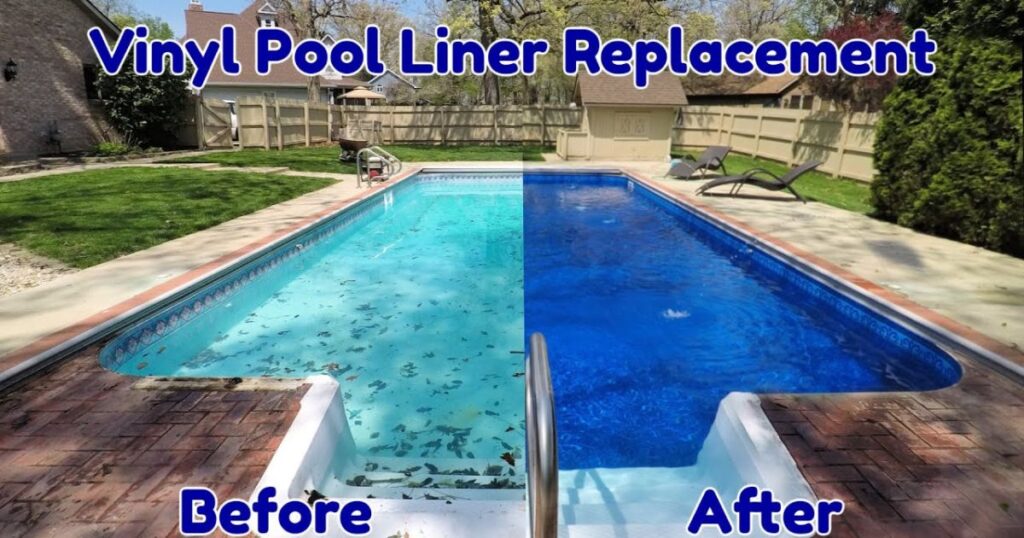
Removing calcium from a vinyl pool liner should leave it clean and unharmed, but accidents happen. If you notice any damage during the process, such as tears or discoloration, don’t panic. Depending on the extent of the damage, you can consider patching it up with a vinyl liner repair kit or consulting a professional for further advice. Sometimes, a little mishap can turn into an opportunity to give your pool a stylish makeover. Embrace the unexpected!
FAQ,s
Why does calcium build up on a vinyl pool liner?
Calcium deposits form due to hard water, leaving cloudy stains on the vinyl surface.
Can I use any acid to remove calcium from my pool liner?
Opt for a mild acid like vinegar to avoid damaging the vinyl while effectively removing calcium.
How often should I clean my vinyl pool liner to prevent calcium buildup?
Regular cleaning every few months helps prevent calcium deposits and keeps your pool liner looking pristine.
Is it necessary to drain the pool to remove calcium deposits?
No, you can remove calcium without draining. Simply use a vinegar solution and scrub the affected areas.
Are there preventive measures to stop calcium buildup in the future?
Maintain proper water balance, use a sequestering agent, and clean your pool regularly to prevent calcium accumulation on the vinyl liner.
Conclusion
Knowing how to remove calcium from your vinyl pool liner is essential for maintaining a pristine swimming environment. By using a mild acid solution like vinegar and scrubbing gently, you can effectively eliminate unsightly calcium deposits without causing damage to the vinyl surface. Remember to avoid abrasive cleaners and make this cleaning process a part of your regular pool maintenance routine.
With the right care, your vinyl pool liner will remain in proper condition, providing a clean and inviting space for endless hours of aquatic enjoyment.In summary, ensuring that the removal of calcium is performed correctly and regularly is key to preserving the beauty and longevity of your vinyl pool liner. By incorporating these simple yet effective steps into your pool care regimen, you’ll not only keep unsightly deposits at bay but also create a proper place for relaxation and recreation. A well-maintained vinyl pool liner contributes to the overall appeal of your pool area, making it a welcoming and enjoyable space for family and friends.
